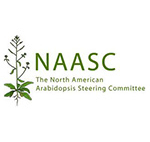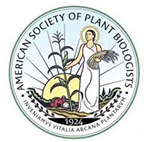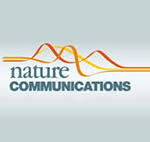Lab News
Our latest work on the function of photobodies is posted on bioRxiv. Congratulations Jean Ae, De, Jiangman, Keunhwa, and Juan!
Our manuscript "Photobodies enable the phase-separation and counterbalance of opposing phytochrome B actions in PIF5 degradation and stabilization" is now online. This work reveals that phytochrome B condensation enables the co-occurrence and competition of two antagonistic phase-separated signaling actions. Link to the paper: https://doi.org/10.1101/2023.11.12.566724 Abstract: Photoactivation of the plant photoreceptor and thermosensor phytochrome B (PHYB) triggers its condensation into subnuclear photobodies (PBs). However, the function of PBs remains frustratingly elusive. Here, we show that PHYB condensation enables the co-occurrence and competition of two antagonistic phase-separated signaling actions. We found that PHYB recruits PHYTOCHROME-INTERACTING FACTOR5 (PIF5) to PBs and, surprisingly, that PHYB exerts opposing roles in degrading and stabilizing PIF5. Perturbing PB size by overproducing PHYB provoked a biphasic PIF5 response: while a moderate increase in PHYB enhanced PIF5 degradation, further elevating the PHYB level stabilized PIF5 by retaining more of it in enlarged PBs. Our results support a model in which [...]
In collaboration with Xuemei Chen’s lab, we report the function of microRNAs in thermomorphogenesis in Nature Communications! Congratulations to Qing, Lusheng, Tianxiang, Yongjian, and Juan!
In collaboration with Xuemei Chen lab, our new article published today in Nature Communications unveils a previously uncharacterized function of microRNA156 in the plant's phenotypic plasticity in response to environmental temperature and light changes. Read the article here. MicroRNAs (miRNAs) play diverse roles in plant development, but whether and how miRNAs participate in thermomorphogenesis remain ambiguous. Here we show that HYPONASTIC LEAVES1 (HYL1) – a key component of miRNA biogenesis – acts downstream of the thermal regulator PHYTOCHROME INTERACTING FACTOR 4 in the temperature-dependent plasticity of hypocotyl growth in Arabidopsis. A hyl1-2 suppressor screen identified a dominant dicer-like1 allele that rescues hyl1-2’s defects in miRNA biosynthesis and thermoresponsive hypocotyl elongation. Genome-wide miRNA and transcriptome analysis revealed microRNA156 (miR156) and its target SQUAMOSA PROMOTER-BINDING-PROTEIN-LIKE 9 (SPL9) to be critical regulators of thermomorphogenesis. Surprisingly, perturbation of the miR156/SPL9 module disengages seedling responsiveness to warm temperatures by impeding auxin sensitivity. Moreover, miR156-dependent auxin sensitivity [...]
Our report on a direct transcriptional repression mechanism by the photoreceptor phytochrome B has been published in Nature Communications. Congrats to all authors, particularly Chan Yu, Jiangman, and Qing!
The Arabidopsis red and far-red photoreceptor phytochrome B is known to regulate gene expression indirectly by modulating the abundance of a family of basic helix-loo-helix transcriptional regulators called PHYTOCHROME-INTERACTING FACTORs (PIFs). In this study published in Nature Communications, we report a new plant light signaling mechanism, in which phytochrome B controls light-responsive genes via direct repression of the transcription activity of PIF3. We also found surprisingly that the transcription activation domain (AD) of PIF3 resembles those found in animal and yeast activators, such as p53 and Gcn4. These new findings suggest the unexpected conservation of sequence-specific ADs between animal, fungal, and plant kingdoms. This project was initiated more than 8 years by Lingyu Long, a research associate, who began to map the AD in PIF3. Chan Yul Yoo continued and finished the project with the help of Jiangman He and Qing Sang, who carried out detailed studies on the similarities between [...]
Congrats Prof. Yoo
Chan Yul has taken an Assistant Professor position in the School of Biological Sciences at University of Utah. Congratulations, Prof. Yoo!




